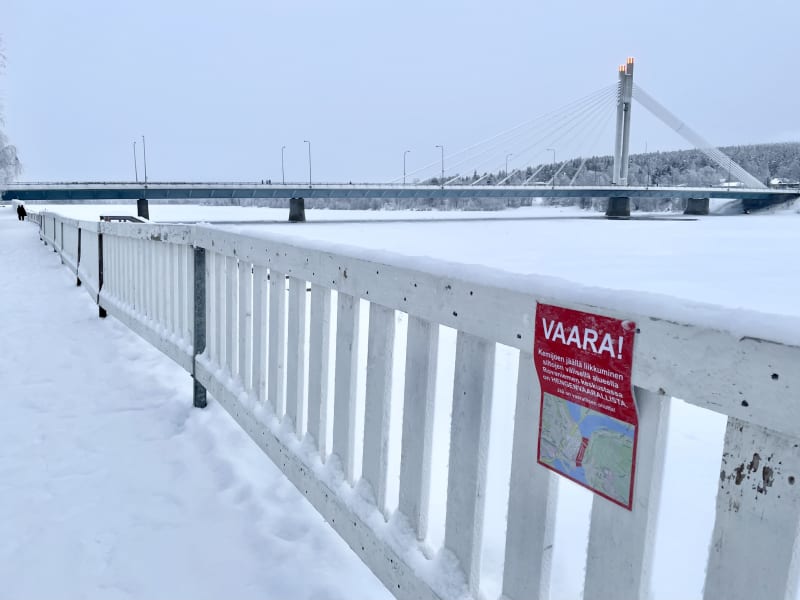
If Finland is threatened with an electricity shortage, the level of the power plant reservoirs in the main river bed of Kemijoki may drop lower than usual. This can raise water on top of the ice and especially on shore areas.
The early winter and January have gone very well at the pace of a traditional winter. During the colder period of December, slightly more water flowed from Lake Kemijärvi than average, and now during the mild and windy period, the flow has been lower. If the weather gets colder and the wind calms down, water will be put in motion from Loka and Porttipahda to be able to meet the needs of the kingdom.
If Finland is threatened with an electricity shortage, the level of the power plant reservoirs in the main river bed of Kemijoki may drop lower than usual. This can raise water on top of the ice and especially on shore areas. The ice can thicken on the shores and even weaken in some places.
The flows of the power plants do not increase, but there is more water in circulation, because if necessary, more water is pumped from Loka and Porttipahda than in the usual winter. The river chain and power plants are operated in accordance with the permit conditions, as in normal winter.
Local knowledge is very important when moving on ice, especially on river ice. The drift and ice mass carried by the river water can change the flow of the river even in the middle of winter, and thaw areas can form in surprising places.
As for the city, in Ounaskoski, the situation seems frighteningly safe. In some places, there is less than a centimeter of ice, if even that, and in other places it is possible to carry a person and a snowmobile well. The distance between the bridges is also very unpredictable this winter and the flow of the river varies daily as the ice masses move below the ice cap.
In Kemijärvi, the situation is good and the surface behaves in a normal winter style and is in a downward direction. Snowfalls have also raised water on the ice in Lake Kemijärvi, and this hinders recreational use. In December, we received information from fishermen that water has risen on regulated as well as unregulated lake ice all over Lapland.
Melt spots can appear anywhere in river areas when the slush and ice mass flowing in the river moves downstream, changing the flow of the river.
Mikko Huokuna, chief engineer of the Finnish Environment Institute, has drawn an observational picture of the formation of funnel dams.
